|
Just over one year ago, I visited the Biedenharn Museum and Gardens in Monroe, Louisiana with my good friends Jude and Rande Kessler. As part of the museum tour, we walked through the old Biedenharn household, where the family's piano remains in working condition in the front room. The guide invited us to play, so I sat down and ran through the opening passage of “Fur Elise” by Beethoven. “That was really impressive,” Rande enthused. "Naw," I honestly demurred, "it's the kind of thing that people recognize, so when they hear it they think you're really good even when you're not!" After chuckling, Rande continued, "Sure. 'Fur Elise' is to the piano what 'Stairway to Heaven' is to the guitar." Indeed, the opening line of “Stairway” has to be among the most famous and frequently played guitar passages in history. It's such a cliché that I've heard people joke about being banned from guitar stores for playing it! One reason this passage is so famous is the mysterious second chord (heard on beat 3 of the first measure, marked with a question mark in the example above), which has long puzzled analyzers. Much like the opening chord of "A Hard Day's Night", the mystery of this harmony has contributed to its enduring legacy. I see six different interpretations, all of which have different strengths and weaknesses and will be considered below. Ultimately, it comes down to (1) which tone is the root?, and (2) which tones are part of the chord vs. which are non-chord tones? In the examples below, the chord tones are shown in orange (with the root in red), while non-chord tones are shown in blue. Interpretation 1: C+M7/g# This means that all four tones are part of the chord – there are no non-chord tones. Strength: It accounts for all tones present. This is the most literal interpretation. Weakness: This is a case of an analysis being over-complicated. My verdict: I don't buy it. Technically, yes, this is accurate – it is indeed a second inversion C augmented chord with an added major seventh. But this is one of those interpretations that satisfies the head while leaving the heart cold. I just don't feel it this way. If I have to give a more objective explanation, it's the root movement from A to C. I don't hear it like that, even if it is technically correct. Interpretation 2: Ab+ This means reinterpreting the G-sharp as A-flat, and calling the high B a passing tone. Strength: One of the most important characteristics of this progression is the chromatically descending bass line. Interpreting the second chord as an A-flat augmented retains that salient chromatic descent in the chord roots. Weakness: One of my professors at Boston University, Dr. Martin Amlin, once made an argument for why descending lines should use sharps instead of flats – it's because of voice leading. In this case, A-flat has no business in the key of A minor. But G-sharp (even though it's the same note as A-flat, just spelled differently) does belong in A minor as the leading tone. (That's why Interpretation 3 below is a G-sharp augmented.) On the other hand, Dr. Amlin was referring to classical contexts - not pop, where rules like voice leading are much more flexible. My verdict: I could buy in to this interpretation, despite its voice leading concerns, but I don't because I think there's a better solution. Interpretation 3: G#+ This means the C is actually a B-sharp, and the E is actually a D-double-sharp. Oh, and the high B is still a passing tone. Strength: This avoids the voice leading problem of interpretation 2. Weakness: Double sharp?! WTF, mate? My verdict: This solves one problem (that doesn't really need to be fixed) at the expense of creating several other (and far worse) problems. Like Interpretation 1, this is another example of the analysis being more complicated than the subject, which defeats the purpose of analysis. No way, Jose! Get this outta here! Interpretation 4: a/g# This means the entire measure is fundamentally a tonic A minor chord, thus the high B is a passing tone while the G-sharp in the bass is either a passing tone or a line chromatic. Strength: It's certainly the simplest of the interpretations because there's only one chord (instead of two) to account for. Weakness: There's no root. My verdict: While I often use this choice when analyzing Beatles music, I don't find it appropriate in this context, in part because of the high B. If a G# replaced that B.... ... or if the subsequent chords clearly sustained A minor (in which case one could call this whole passage a static A minor chord with line chromatics in the bass)... … then I'd probably chose this interpretation for the sake of simplicity. As is, however, I still think there's a better solution. Interpretation 5: E/G# This means the C is a pedal tone left over from the previous A minor chord. Strength: The progression A minor to E major is extremely common. This root movement makes perfect sense. Weakness: That pesky C complicates things. The only way to account for it is as a suspension leftover from the previous chord. My verdict: I think this is the best interpretation. If we make another hypothetical example, this one in which the non-chord tone C is replaced by chord tone B... … not only does it look good, but it sounds good, too. Jimmy Page could have easily played this instead, though he chose not to. And frankly, he shouldn't have played this - the progression is much more interesting with ambiguous harmony. Interpretation 6: E+/G# This solves the problem of that pesky C by reinterpreting it as a B-sharp (the fifth of an E-augmented chord); however, that only creates a new problem regarding the high B, which now necessarily becomes a non-chord tone. Strength: It solves one problem... Weakness: … by creating another. My verdict: Bottom line is there's nothing to be gained from this interpretation. Any potential gains are offset by additional complications. Clearly, there is no easy answer, but I find Interpretation 5: E/G# most compelling.
0 Comments
Your comment will be posted after it is approved.
Leave a Reply. |
Aaron Krerowicz, pop music scholarAn informal but highly analytic study of popular music. Archives
August 2019
Categories
All
|

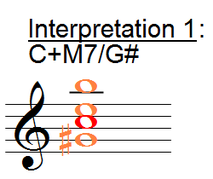
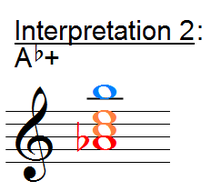
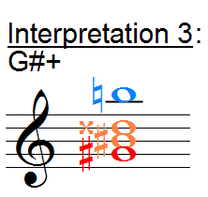
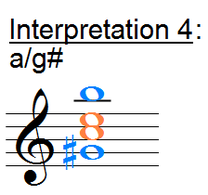
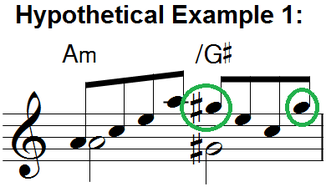

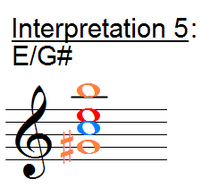
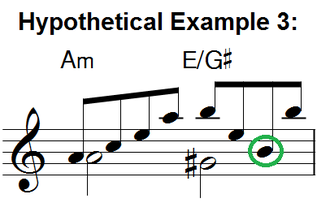
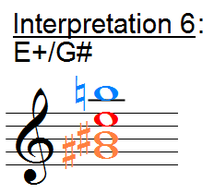
 RSS Feed
RSS Feed
